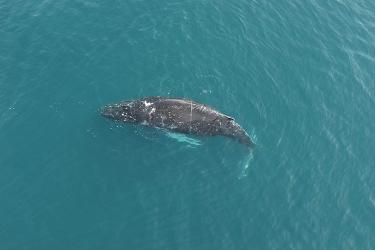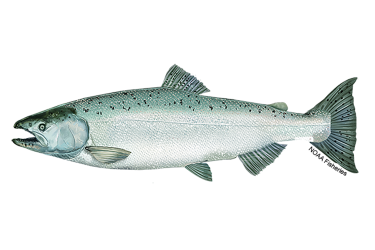The National Marine Fisheries Service (NMFS) reports the incidental take of two endangered short-tailed albatrosses (STAL) in the hook-and-line groundfish fishery of the Bering Sea/Aleutian Islands (BSAI). The first bird was taken on August 27, 2010, at 56 37’ N and 172 57’ W in NMFS reporting area 523. The bird had an identifying leg band from its natal breeding colony in Japan. It was a subadult at 7 years and 10 months old. The second bird was also taken in the BSAI on September 14, 2010, at 59 20' N and 176 33' W in NMFS reporting area 521. This bird also had an identifying legband and was 3 years and 10 months. The last STAL take, previous to these two, occurred in 1998.
Chart indicates locations (red dots) of all STAL from Sept through November. Data are from birds tagged with satellite transmitters from 2001-2010. The two recent takes are depicted by purple stars. Credits: Yamashina Institute for Ornithology, Oregon State University, U.S. Fish and Wildlife Service, and Ministry of Environment Japan.
The world population of the endangered short-tailed albatross in 2009 was at about 3,000 according to the STAL Recovery Team that met recently at the World Seabird Conference in Victoria, British Columbia. The short-tailed albatross is protected in Alaska waters by the Endangered Species Act (ESA). As a result of consultation with the US Fish and Wildlife Service (USFWS) under the ESA, USFWS issued an incidental take statement of 4 birds during each 2-year period for the BSAI and Gulf of Alaska (GOA) hook-and-line groundfish fisheries. In instances where the amount or extent of incidental take is exceeded, any operations causing such take must cease, pending reinitiation of consultation with the USFWS. NMFS may choose to reinitiate consultation if/when the level of authorized incidental take is met but not exceeded, in order to avoid potential delays in operations. To date, the incidental take levels have not been reached during the current or any previous Biological Opinions.
The NMFS Regional Office, NMFS North Pacific Groundfish Observer Program, and the USFWS are actively coordinating efforts and communicating with each other in response to these take incidents and are complying to the fullest extent with ESA requirements to protect this species. NMFS is also working closely with the cod freezer longline fleet, where the birds were taken, to evaluate what additional actions can be taken by the fleet to avoid further takes.
To assist in this coordinated effort, NMFS reminds operators of hook-and-line vessels in the BSAI and GOA that they are required to employ multiple seabird avoidance measures. ?Hook-and-line vessel operators should use great caution when fishing in these areas and when short-tailed albatross are sighted, ? says Jim Balsiger, Regional Administrator for the Alaska Region of NOAA Fisheries.
Detailed information on those requirements is available on the seabird bycatch reduction page.
This information bulletin provides information about regulations at 50 CFR Parts 679.24(e) and 679.42(b)(2). See these cites for the specific regulations.






